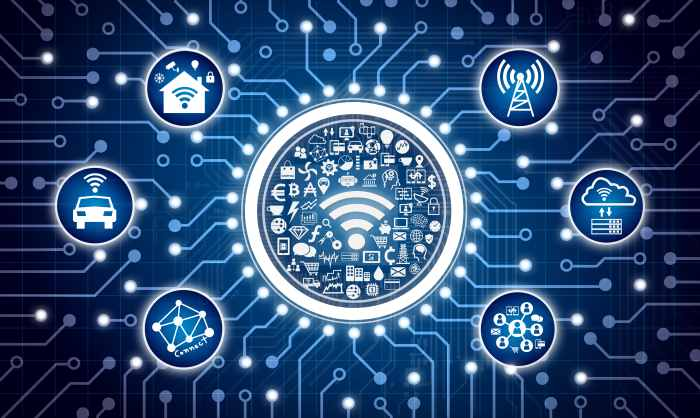Nowadays, locking the doors and installing security cameras are no longer sufficient safeguards for your company. Your data, as well as your client’s data, are in the digital realm, and if you’re solely depending on the default security of your WiFi, you should install a Hide-A-Key by the front door. The reason why we are insisting on it is because WiFi is the most popular and frequently utilized wireless network. And it brings a unique set of cybersecurity vulnerabilities.
Therefore, conducting a WiFi Network Security Risk Assessment is a critical step to identify and mitigate these vulnerabilities. Just like you have a security system for your physical structure, there are measures to secure your digital assets from potential breaches. For example, changing network passwords, implementing a private in-building WiFi system, or configuring Virtual Private Networks (VPN) for remote workers.
Threats That WiFi Poses To Businesses
WiFi can be a security problem for more extensive internal networks in businesses like colleges, university campuses, hospitals, and significant retail and office buildings. The widely used WiFi network access points commonly include the following:
“Piggybacking”
For many people, this could be a new term. Piggybacking on Internet access is creating a wireless Internet connection by utilizing another subscriber’s wireless Internet access service without the subscriber’s explicit agreement or knowledge.
It can be done from any wireless-enabled computer and from up to 1000 feet away, depending on the location of the business’s wireless access point. With this unethical practice, many unauthorized users on your network can access critical information, monitor online traffic, and participate in other illegal activities.
Security Breaches
Intentional security breaches, such as a brute force attack—a trial-and-error process used by hackers can crack your encrypted data. Examples include falling for a phishing email and exposing personal information to a malicious source.
Malware Distribution
Hackers can exploit an unsecured WiFi connection to spread malware and infect your system. Now, malware is like any software designed to disrupt, damage, or gain access to a computer system. It also poses a significant danger to your organization’s wireless security.
How to safeguard your company’s and your client’s data in the office?
Even with secure and public WiFi, businesses frequently allow guests access to their networks. While the aim may not be malicious, it does create a dangerous access point with potentially disastrous effects.
The best solution to this problem would be to increase the strength of your cybersecurity program. It will secure the network and prevent unwanted, hostile access to your data and critical client information. We have mentioned some essential ways to help you out.
- Alter The Default Passwords: Personalizing passwords on network devices is the first line of defense. For a baseline of cybersecurity and safety, you should eliminate default passwords from getting discovered online.
- Divide Your WiFi Networks: Set up two separate WiFi networks for employees and guests to limit unauthorized access to your company’s data and prevent unauthorized users from reading sensitive information or infecting your network with malware.
- Encrypt Your Information: Encrypting your company’s wireless data prevents those with illegal access to the network from accessing the information on that network. Wired Equivalent Privacy (WEP), WiFi Protected Access (WPA), WPA2, and WPA3 are all excellent encryption methods. However, WPA3 is the most potent option currently available.
- Avoid Placing WiFi in Office: While WiFi is the most used wireless connection option, the cybersecurity risks of an inadequately secured network are bound to happen. Consider implementing a private in-building wireless system as a more secure and efficient alternative to WiFi. It will be less vulnerable to unwanted entrance from hackers and will protect client and company information.

How Remote Workers Can Engage in Secure Wireless Activity
Today’s remote workforce necessitates additional security measures beyond the in-building wireless equipment. It also secures the integrity of a company network wherever employees connect.
A complete remote access strategy should have several technical and practical safeguards. It will ensure that a remote employee does not become a weak link in the company’s cybersecurity. We have tailored some ways to help you secure the wireless activity of employees below.
- Set up a VPN for remote employees: A Virtual Private Network (VPN) enables remote workers to securely access the company network even when not in the office. The VPN encrypts messages at both the beginning and endpoints and blocks unidentified traffic.
- Update The Terms of Public Usage: Malicious hackers in public places can obtain important information simply by hacking through an unfiltered screen or taking a device. Train remote employees to be conscious of their surroundings and discreet about the material they read or access in public.
- Use Public WiFi As Little As Possible: If a corporation cannot setup a VPN, most mobile carriers offer the possibility of creating a private mobile “hotspot” via a smartphone that can support a laptop to avoid utilizing public networks.
- Use Websites That Support HTTPS: These websites prevent harmful or benign agents from tampering with the connection between websites and user browsers to obtain personal information.
Switching from WiFi to a private in-building wireless connection can aid in the security of the company’s central network. Providing secure choices for remote workers strengthens a company’s defenses against potential hackers and unwanted access. Wireless network security measures will aid in the preservation and protection of not just company data but also important client and financial information.



More Stories
Security Best Practices for WordPress Hosting
Understanding Brokerage Calculators: A Comprehensive Guide for Traders
The Enchanting Forest Baby Mobile: A Whimsical Journey for Your Little One